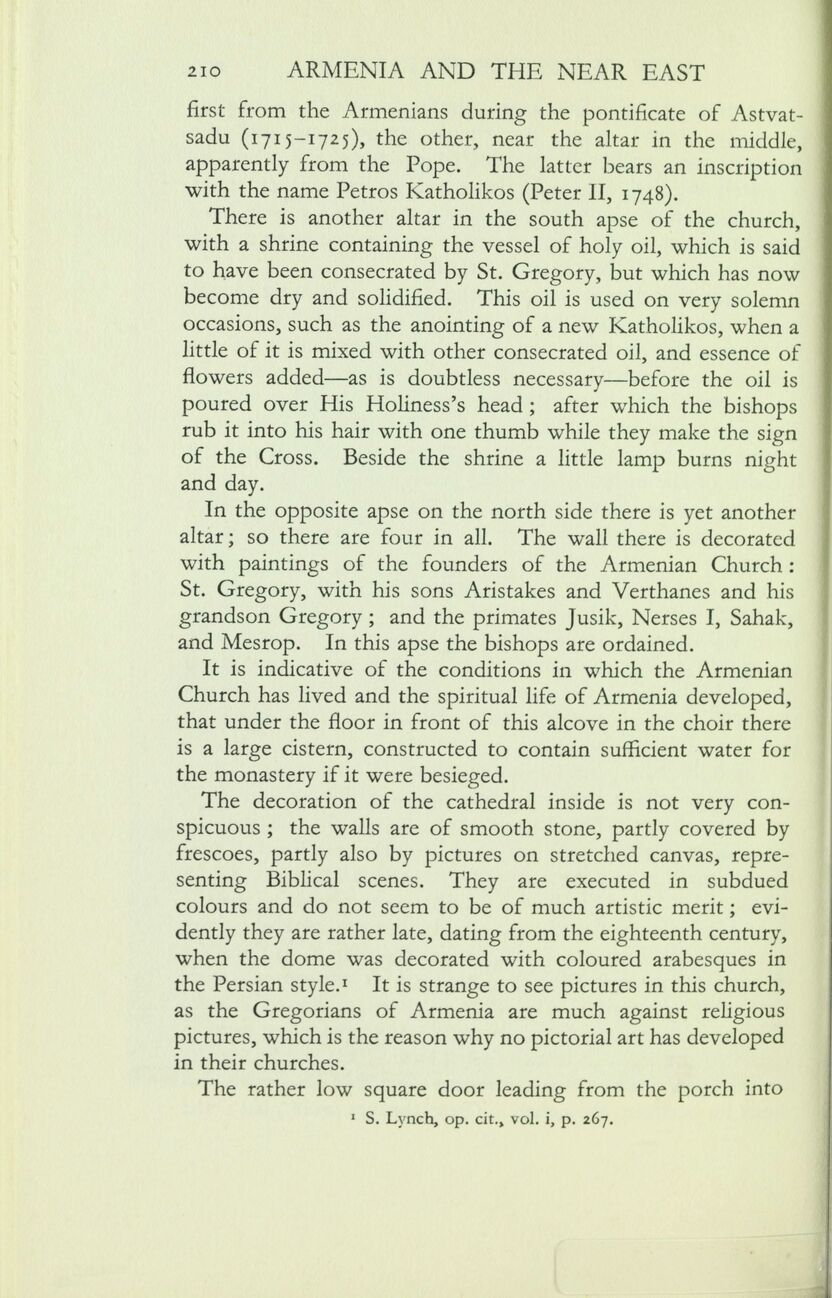
Full resolution (JPEG) - On this page / på denna sida - IX. New plans for irrigation. Echmiadzin

<< prev. page << föreg. sida << >> nästa sida >> next page >>
Below is the raw OCR text
from the above scanned image.
Do you see an error? Proofread the page now!
Här nedan syns maskintolkade texten från faksimilbilden ovan.
Ser du något fel? Korrekturläs sidan nu!
This page has never been proofread. / Denna sida har aldrig korrekturlästs.
ARMENIA AND THE NEAR EAST
210
first from the Armenians during the pontificate of Astvat
sadu (171 5-1725), the other, near the altar in the middle,
apparently from the Pope. The latter bears an inscription
with the nåme Petros Katholikos (Peter 11, 1748).
There is another altar in the south apse of the church,
with a shrine containing the vessel of holy oil, which is said
to have been consecrated by St. Gregory, but which has now
become dry and solidified. This oil is used on very solemn
occasions, such as the anointing of a new Katholikos, when a
little of it is mixed with other consecrated oil, and essence of
flowers added—as is doubtless necessary—before the oil is
poured over His Holiness’s head ; after which the bishops
rub it into his hair with one thumb while they make the sign
of the Cross. Beside the shrine a little lamp burns night
and day.
In the opposite apse on the north side there is yet another
altar; so there are four in all. The wall there is decorated
with paintings of the founders of the Armenian Church :
St. Gregory, with his sons Aristakes and Verthanes and his
grandson Gregory ; and the primates Jusik, Nerses I, Sahak,
and Mesrop. In this apse the bishops are ordained.
It is indicative of the conditions in which the Armenian
Church has lived and the spiritual life of Armenia developed,
that under the floor in front of this alcove in the choir there
is a large cistern, constructed to contain sufficient water for
the monastery if it were besieged.
The decoration of the cathedral inside is not very con
spicuous ; the walls are of smooth stone, partly covered by
frescoes, partly also by pictures on stretched canvas, repre
senting Biblical scenes. They are executed in subdued
colours and do not seem to be of much artistic merit ; evi
dently they are rather late, dating from the eighteenth century,
when the dome was decorated with coloured arabesques in
the Persian style.1 It is strange to see pictures in this church,
as the Gregorians of Armenia are much against religious
pictures, which is the reason why no pictorial art has developed
in their churches.
The rather low square door leading from the porch into
S. Lynch, op. eit., vol. i, p. 267.
<< prev. page << föreg. sida << >> nästa sida >> next page >>